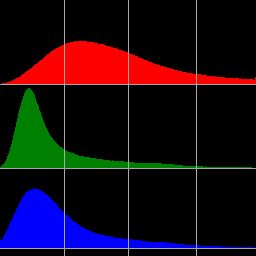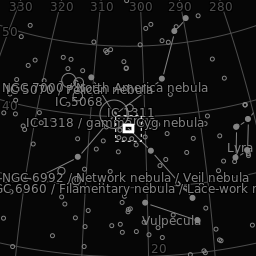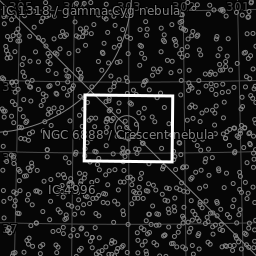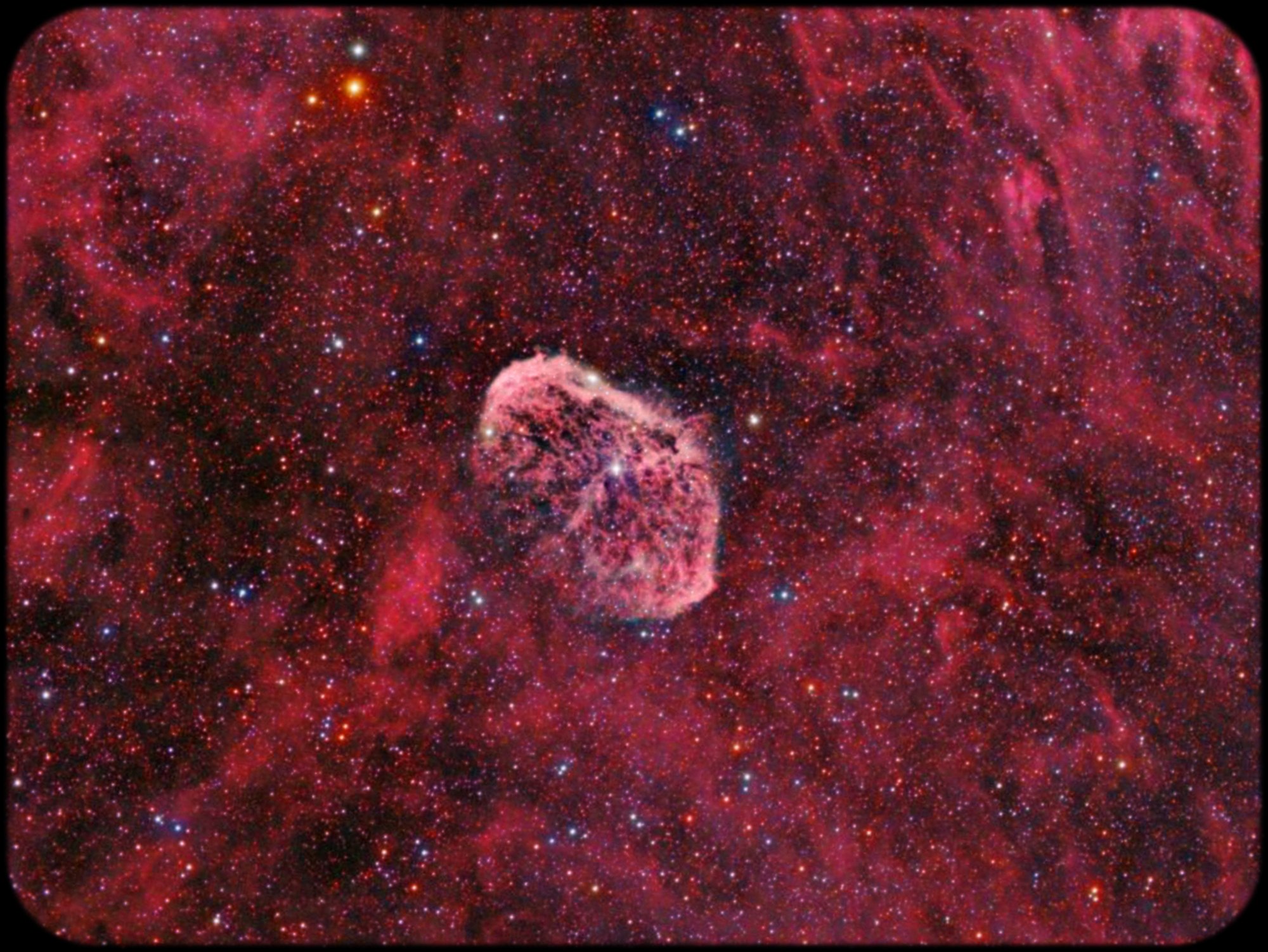NGC6888 in hybrid palette:
Ha mapped to R, synthetic green from OIII and Ha, OIII mapped to blue. Single exposures with RGB filters for the stars colors.
The Crescent Nebula (also known as NGC 6888, Caldwell 27, Sharpless 105) is an emission nebula in the constellation Cygnus, about 5000 light-years away from Earth. It was discovered by Friedrich Wilhelm Herschel in 1792. It is formed by the fast stellar wind from the Wolf-Rayet star WR 136 (HD 192163) colliding with and energizing the slower moving wind ejected by the star when it became a red giant around 250,000 to 400,000 years ago. The result of the collision is a shell and two shock waves, one moving outward and one moving inward. The inward moving shock wave heats the stellar wind to X-ray-emitting temperatures. [Wiki] |
|
|
| Optic |
SW Quattro 8S 200mm f/4 with Baader MPCC Mark III corrector
SW ED80 + 0,85 Reducer/Flattener |
| Camera |
Atik 383L+ |
| Filters |
Baader Ha, OIII, R, G, B 36mm |
| Mount |
NEQ6 with EQASCOM
|
Guide
|
SW 70/500 with AlCCD5
|
Frame center
|
RA 20:12:01 DEC 38:20:51 J2000
|
Date
|
July 2017, July 2016
|
Site
|
Backyard, Busto G. Milan, Italy
|
| Exposures
|
Ha 8x900s bin1x1 @-10°C
OIII 16x900s
RGB 1x900s each
Integration time - 6h45m
|
|



|
|



